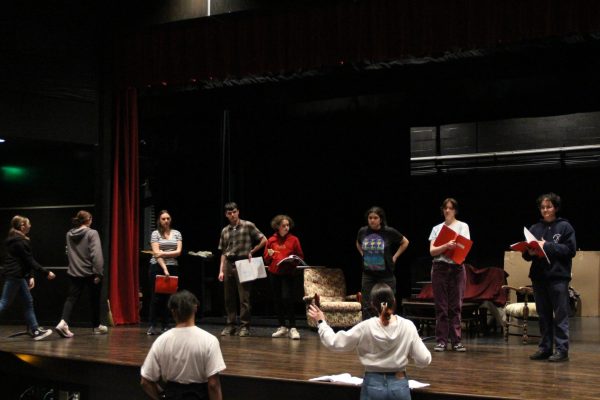The Negative Effects of Remote Learning
For many, online learning is a perfect solution for the challenges COVID-19 poses towards education. While on the surface it may seem like a good solution to protect our community from contracting COVID-19, there are many negative effects to be considered. With Remote learning, cheating becomes a bigger concern, actual learning time is reduced, mental/emotional health can suffer, and physical activity among students decreases.
Cheating has become exponentially easier during online learning. My experience for testing goes something like this: I log into the Zoom, and the teacher tells us we have to have our cameras on for the duration of the test. The class goes to the test on Canvas, and we get started. Once we finish, we either click submit or we take a picture of our work and upload it. I know that the teacher can see if a student went into a different tab during the test, which can stop the cheating epidemic in many cases. However, there are many other ways of cheating that can’t be regulated by teachers in the remote model. A recent study found 93% of educators that were surveyed believed students are more likely to cheat during online courses.
Another big problem with remote learning is that students are learning less online than they would in the physical building. For instance, when in the school building, most Greylock science classrooms are equipped with the necessary materials to let students participate in hands-on labs or experiments, which can make those classes much more interesting. When learning from home, we can’t really complete these experiments, so it becomes harder to visualize and understand certain concepts. Some students may have a more difficult time paying attention during class as well. At home, distractions are much more prevalent. Students can scroll on their phones without getting caught. Others may open another tab on their chromebook and play games, all the while appearing to be paying attention because they are looking at the screen.
Perhaps even more troubling is the fact that many students are suffering from mental or emotional health issues as a result of online learning. Before the pandemic, students could interact with friends during lunch and throughout the day. But now that we’re fully remote, students can’t socialize with each other face-to-face. It can get boring and down right lonely being cooped up in the same house for a long period of time. According to the Society for Research in Child Development, “close friendship strength in mid-adolescence predicted relative increases in self-worth and decreased anxiety in and depressive systems by early adulthood.”
The importance of being able to maintain friendships during high school is a vital aspect of maintaining one’s mental health, and remote-learning strains those relationships with diminished face-to-face contact. In our generation, we rely so heavily on our devices for communication that in-person learning provides us an opportunity to interact with others face-to-face instead of just texting, which is something we need to be successful adults. A recent study among children ages 8-18 found that severe anxiety among children has almost doubled, which again shows the harm remote learning has created among children.
Finally, remote learning leads to a lack of physical activity among children. Although there are some winter sports, many students get their exercise from gym class. But in the remote learning model, gym class consists of the coach spending a few minutes talking about what we’re supposed to do, and then we are allowed to log off and do the exercise. Any student can lie about if they did it and the coach will have no way of knowing if the student actually did the exercise or not. A recent study by BMC Public Health shows that changes in physical activity during COVID-19 has caused an increased risk of obesity, diabetes, and cardiovascular disease among children.
I know that I’ve missed going to school every morning instead of logging onto a Zoom meeting, and I, like most of you, hate the negative effects that come along with learning remotely. Online learning causes serious problems among students both physically and emotionally. Hopefully, with the COVID-19 vaccine in the early stages of distribution, we won’t have to deal with these issues in the near future.




